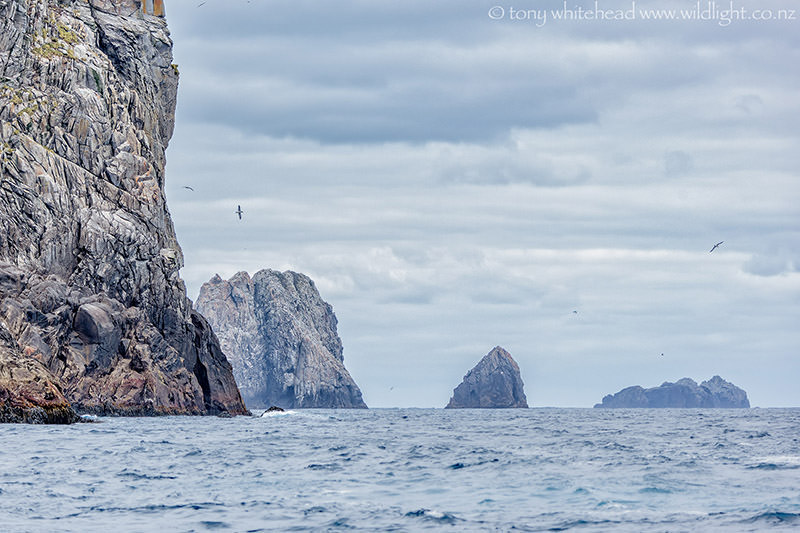
The Snares, named for their habit of snaring unwary ships, are only approximately 100km away from Stewart Island, so are visible from there on a good day. They were seasonally visited by Maori to harvest mutton birds (Sooty Shearwater chicks). No long term settlements were established and fortunately none of the pests that have damaged other islands were introduced. As a result the Snares are an almost pristine haven for birds, being the major breeding ground for Buller’s Albatross and the only home of the endemic Snares Crested Penguin, Snares Fernbird and Snipe, and the unique, all black Snares Tomtit.
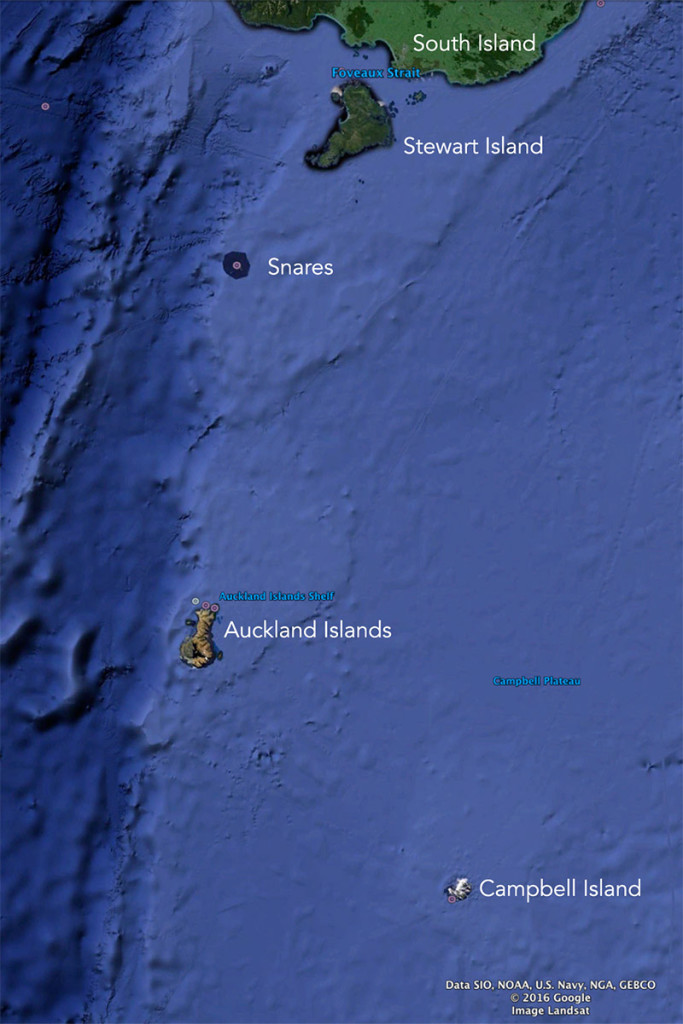
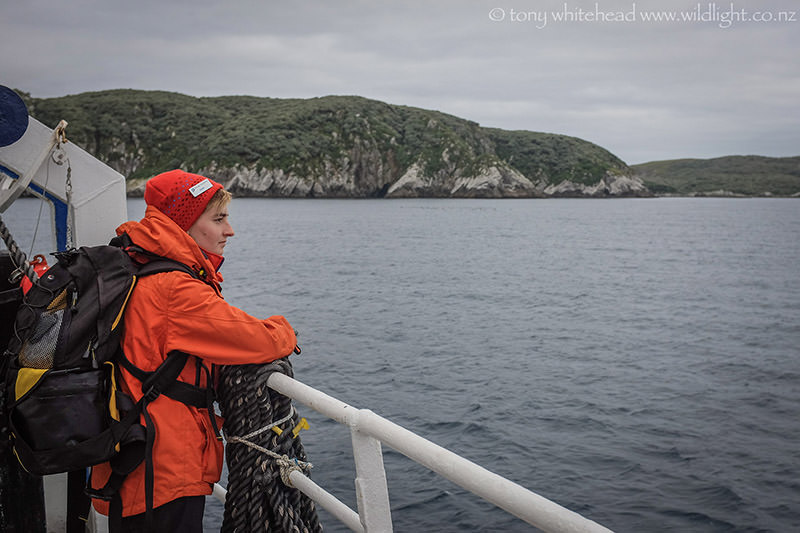
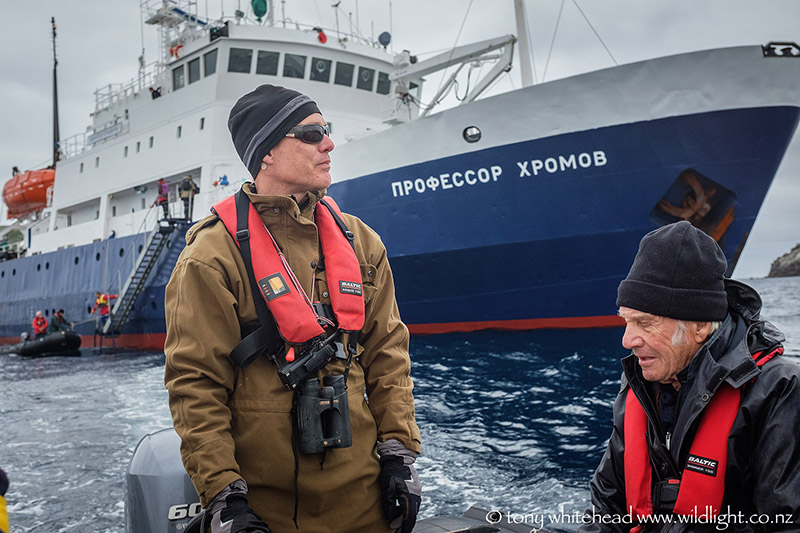
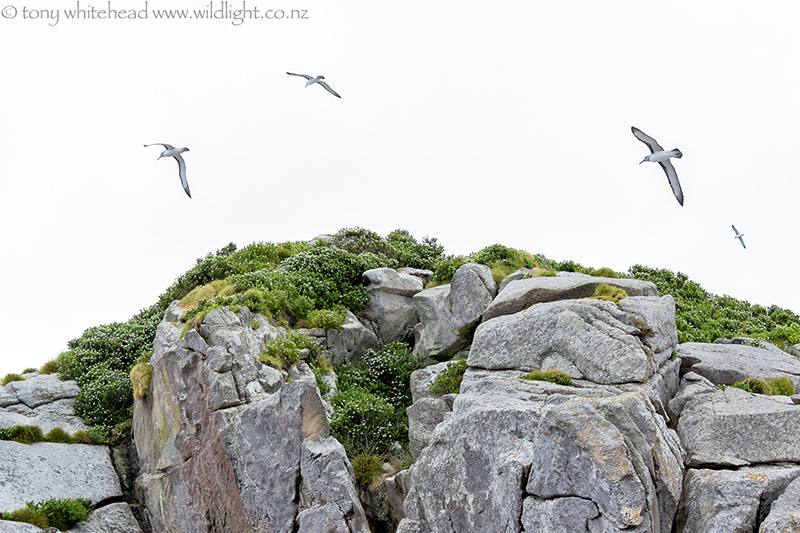
My first view of the Snares was from our cabin window after our overnight passage. A calm sea was covered with rafts of Cape Petrels, Sooty Shearwaters and Buller’s Albatross which intermittently pattered over the surface to join the flocks wheeling in the sky over the island. Landing is not permitted so the plan was to cruise the eastern shore of North East Island and we were soon on the first Zodiac to leave the ship and heading toward the rocky, kelp-lined shore. I had been longing to see the Snares Penguins but was distracted by the massive cliffs and stacks of ancient granite weathered into angular slabs and painted with lichens. Every time we rounded a corner a new vista opened up, looking like a movie set created by Weta Workshop. I was continually torn between trying to capture the drama of the geology and making pictures of the wildlife. The botany is no less fascinating with a dense forest consisting of 2 tree daisy species, Olearia lyalli and Brachyglottis stewartiae as well as areas of tussock and some Stilbocarpa megaherbs. Conditions were perfect for Zodiac cruising and we made the most of the opportunity as not all expeditions get the chance with Edin’s first trip having apparently been the first trip in four that had encountered suitable conditions.
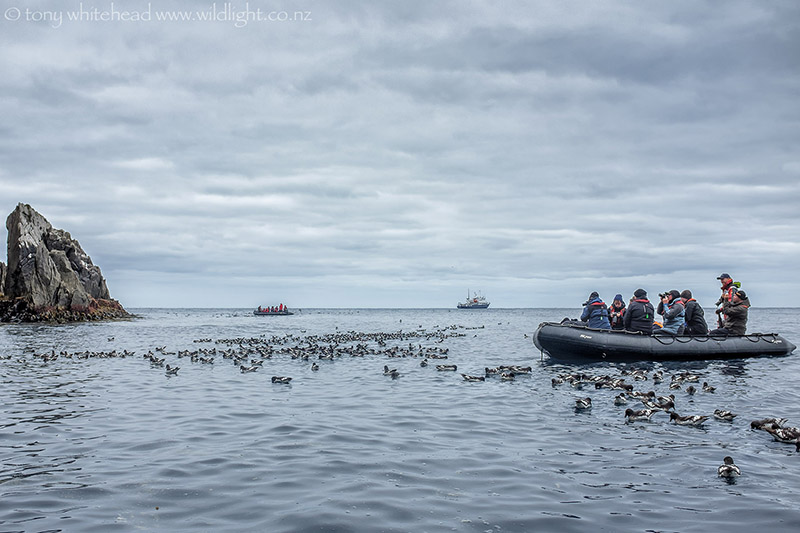
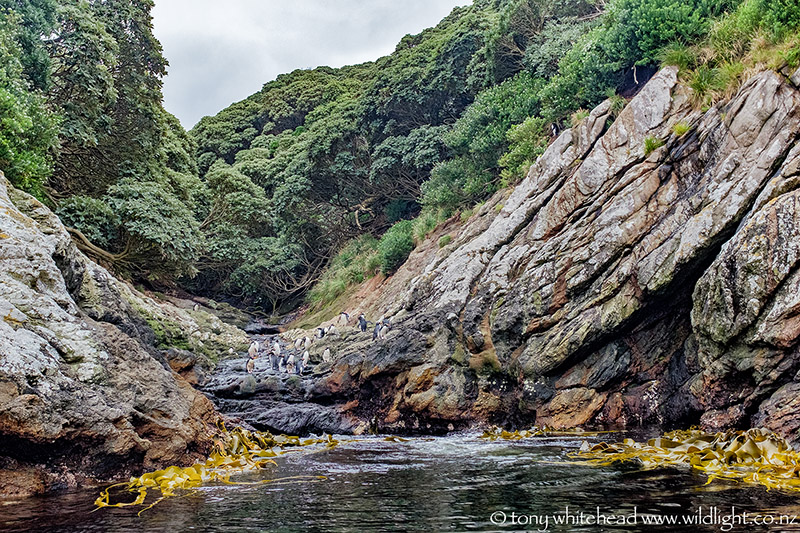
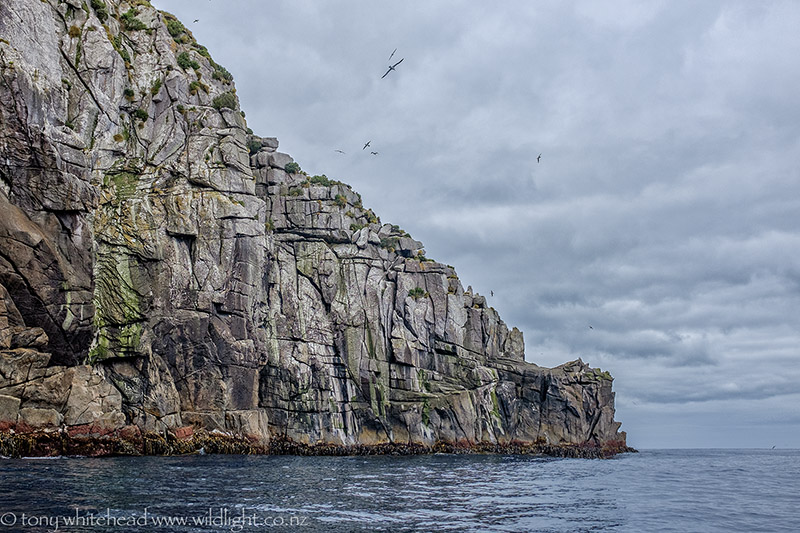
My plan was to cover the Snares with a single blog post but I have too many images to do it justice in one so will spread them over the a couple of posts, today being an overview and next week we will focus in on the wildlife a little. Edin has a detailed post covering her 2 visits to the Snares.
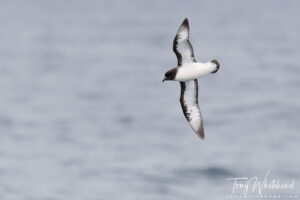
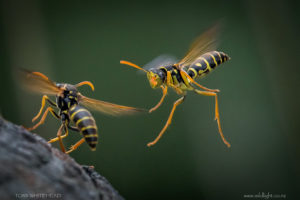
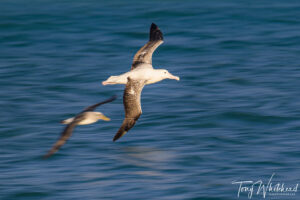
Gail Bisson
31 Mar 2016This place looks awesome.